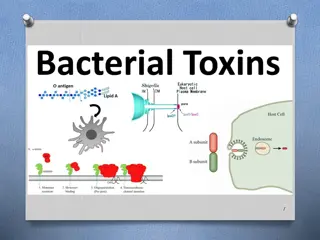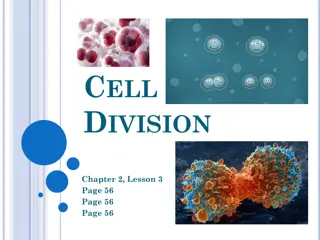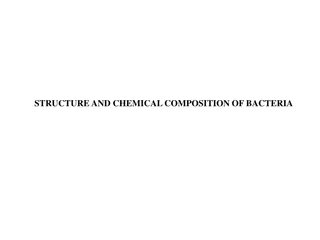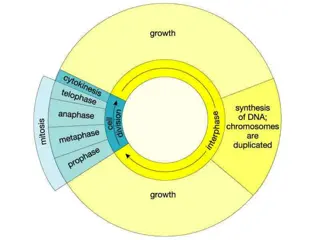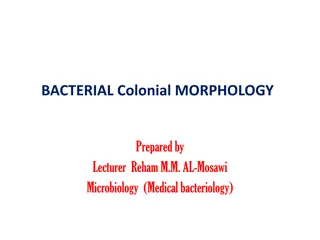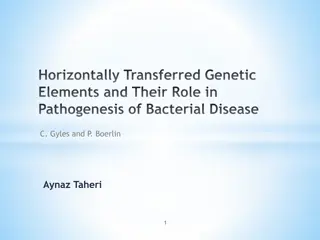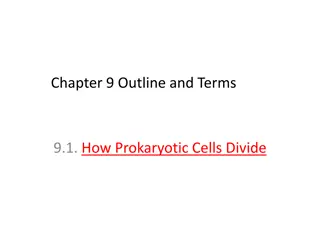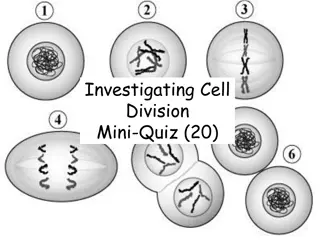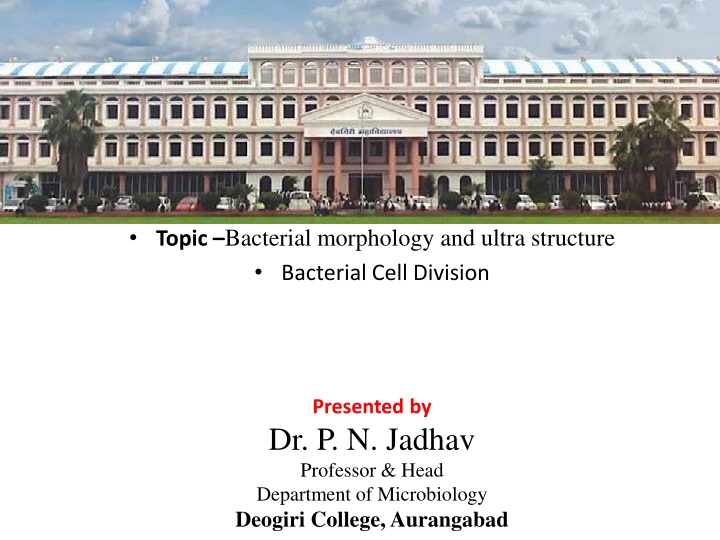
Bacterial Cell Division and Morphology
Explore the process of binary fission in bacteria, including DNA replication, cell wall synthesis, and cell separation. Learn about bacterial endospores, their resistance, sporulation, and germination. Discover the rapid reproduction of bacteria in favorable conditions.
Download Presentation

Please find below an Image/Link to download the presentation.
The content on the website is provided AS IS for your information and personal use only. It may not be sold, licensed, or shared on other websites without obtaining consent from the author. If you encounter any issues during the download, it is possible that the publisher has removed the file from their server.
You are allowed to download the files provided on this website for personal or commercial use, subject to the condition that they are used lawfully. All files are the property of their respective owners.
The content on the website is provided AS IS for your information and personal use only. It may not be sold, licensed, or shared on other websites without obtaining consent from the author.
E N D
Presentation Transcript
Topic Bacterial morphology and ultra structure Bacterial Cell Division Presented by Dr. P. N. Jadhav Professor & Head Department of Microbiology Deogiri College, Aurangabad
B. Sc. First Year Semester II Paper IV- Cytology and General Microbiology Unit 1: Bacterial morphology and ultra structure
Bacterial Cell Division Binary Fission- the process of one organism dividing into two organisms FissiBinary Fission- the process of one organism dividing into two organisms one parent Asexual reproduction- reproduction of a living thing from only Fission is a type of asexual reproduction on is a type of asexual reproduction
How?... The one main (circular) chromosome makes a copy of itself Then it divides into two
Binary Fission Bacteria dividing Completed
Reproduction of Bacteria The time of reproduction depends on how desirable the conditions are Bacteria can rapidly reproduce themselves in warm, dark, and moist conditions Some can reproduce every 20 minutes (one bacteria could be an ancestor to bacteria in six hours) one million
Binary Fission Bacterial Cell & Nucleiod DNA Ring DNA replication Cell wall synthesis Cell separation
Bacterial Endospores: An Extremely Resistant Stage Dormant, tough, non-reproductive structure produced by small number of bacteria. Resistant to radiation, desiccation, lysozyme, temperature, starvation, and chemical disinfectants. Endospores are commonly found in soil and water, where they may survive for very long periods of time.
Occurs in members of genera Bacillus and Clostridium Dormant cell produced by a process called Sporulation Germination- when they exit the dormant state and then become a vegetative cell Several species of endospore formers can cause disease
Special Structure * Endospores Spore former: Sporobactobacilli and Sporosarcinae (Gram + cocci)- no medical importance. Bacillus and Clostridium ( Gram + Rod) have medical importance. Coxiella ( Gram ve Rod) cause Q fever. * Position: median, sub-terminal and terminal have small water, high calcium content and dipicolinic acid (calcium dipicolinate) Extremely resistant to heat, UV, chemicals etc. may be due to many S containing A.A for disulfide groups.
The process of endospore formation After the active growth period approaching the stationary growth phase, a structure called forespore develops within the cells. It consists of coat, cortex and nuclear structure.
NNegaegatively Stained Bacillus: (A) Vegetative Cell (NB) spo
An endospore is a dormant, tough, and non- reproductive structure produced by some bacteria in the phylum Firmicutes. The name "endospore" is suggestive of a spore or seed-like form (endo means within), but it is not a true spore (i.e., not an offspring). Bacteria produce a single endospore internally. The spore is sometimes surrounded by a thin covering known as the exosporium, which overlies the spore coat. The spore coat, which acts like a sieve that excludes large toxic molecules like lysozyme, is resistant to many toxic molecules and may also contain enzymes that are involved in germination.
The arrangement of spore layers is as follows: Exosporium Spore coat Spore cortex Core wall The position of the endospore differs among bacterial species and is useful in identification. The main types within the cell are terminal, sub terminal, and centrally placed endospores.
Terminal endospores are seen at the poles of cells, whereas central endospores are more or less in the middle. Subterminal endospores are those between these two extremes, usually seen far enough towards the poles but close enough to the center so as not to be considered either terminal or central. Lateral endospores are seen occasionally. Examples of bacteria having terminal endospores include Clostridium tetani, the pathogen that causes the disease tetanus. Bacteria having a centrally placed endospore include Bacillus cereus. Sometimes the endospore can be so large the cell can be distended around the endospore. This is typical of Clostridium tetani.
Detailed steps in endospore formation(1
PROCARYOTIC vs. EUCARYOTIC CELLS Property Procaryotes Absent No One Absent No Partial unidirectional fusion of gametes Eucaryotes Present Yes > One Present Yes Meiosis Membrane-bound nucleus DNA complexed with histones Number of chromosomes Nucleolus Mitosis Genetic recombination


